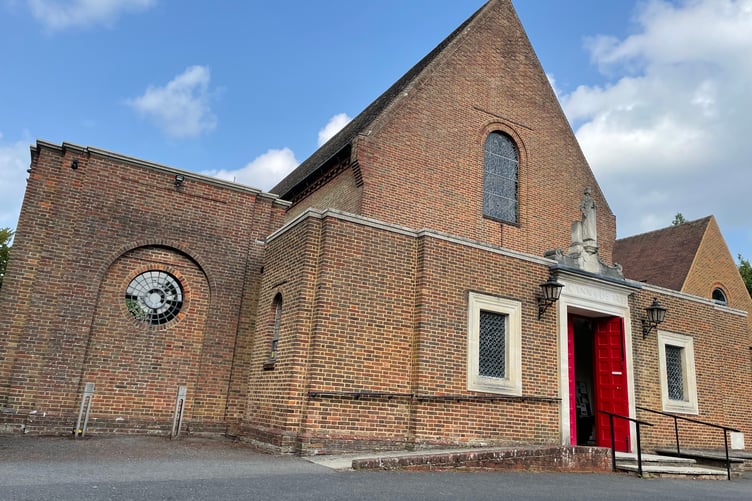It may seem an oddity that in Farnham, a town as quintessentially English as they come, a church is named after a French teenager who rose to fame fighting the English.
Yet the presence of St Joan of Arc Catholic Church on Tilford Road is less a paradox and more a story of devotion, symbolism, and reconciliation.
The church’s origins are unmistakably Gallic. Two French priests, Fr Mathieu Gerin and Fr Etienne Robo, played pivotal roles in re-establishing Catholic life in Farnham after centuries of absence following the Reformation.
Fr Gerin arrived in 1888, seeking refuge from anti-clerical laws in his homeland. He began modestly, establishing a chapel at Frensham Place, now Edgeborough School, which marked the first official Catholic place of worship in the area since the 16th century.
As Farnham’s Catholic community grew, so did the need for space. Fr Gerin purchased a disused police station in Bear Lane. The upper floor was converted into a small church, named St Polycarps, where the first mass was celebrated on January 26, 1890. Below, a school was founded, which quickly outgrew its confines and moved into purpose-built premises next door.
But Fr Gerin’s work was tragically cut short. In 1905, while returning from the local workhouse, where he had said mass for Catholic inmates, he was struck by a car in The Borough and hurled through a shop window. His injuries were severe. With no insurance compensation available, he retired two years later, eventually moving to Littlehampton. His final years were marked by legal and financial difficulties.
It wasn’t until 1913 that Fr Etienne Robo arrived in Farnham, and though the two priests didn’t overlap in their ministries, their efforts form a continuous thread. After service in the French army during the First World War, Fr Robo returned in 1919 to a parish that had outgrown its home in Bear Lane. A new church was no longer just desirable, it was essential.
He chose to dedicate it to St Joan of Arc, the peasant girl from Domrémy who, claiming divine guidance, led French forces during the Hundred Years’ War. Joan played a key role in lifting the siege of Orleans and helped pave the way for the coronation of Charles VII.
Captured during the Siege of Compiegne, she was handed over to the English and put on trial not for her military actions, but for heresy and insubordination, specifically, for wearing men’s clothing and claiming to receive visions from God.
In 1431, at just 19 years old, she was tried and condemned by a church court attended by Cardinal Henry Beaufort, Bishop of Winchester and long-time resident of Farnham Castle. She was burned at the stake in Rouen and her ashes were scattered in the Seine.
Her trial was later deemed a miscarriage of justice, and she emerged not only as a symbol of French patriotism, but also of spiritual courage and early feminist defiance.
Nearly 500 years later, in 1920, the Catholic Church canonised her in recognition of the profound injustice she had suffered.
In Farnham, St Joan is not commemorated for the battles she fought, but for her unwavering conviction, faith, and martyrdom. The dedication is also poignant given Beaufort’s local ties as an act of symbolic atonement in the very town associated with her trial.
In 1923, Fr Robo secured land on Tilford Road, a disused gravel pit that was also an unofficial town dumping ground. By 1928, plans were in place, courtesy of architect and benefactor Colonel J.E. Dixon-Spain.
The foundation stone was laid on May 23, 1929. Almost exactly a year later, on St Joan’s feast day on May 30, the new church was opened. In 1932, it was granted full parish status.
Today, St Joan of Arc Catholic Church stands not only as a place of worship, but as a symbol of faith, reconciliation, and the curious turns of history.





Comments
This article has no comments yet. Be the first to leave a comment.